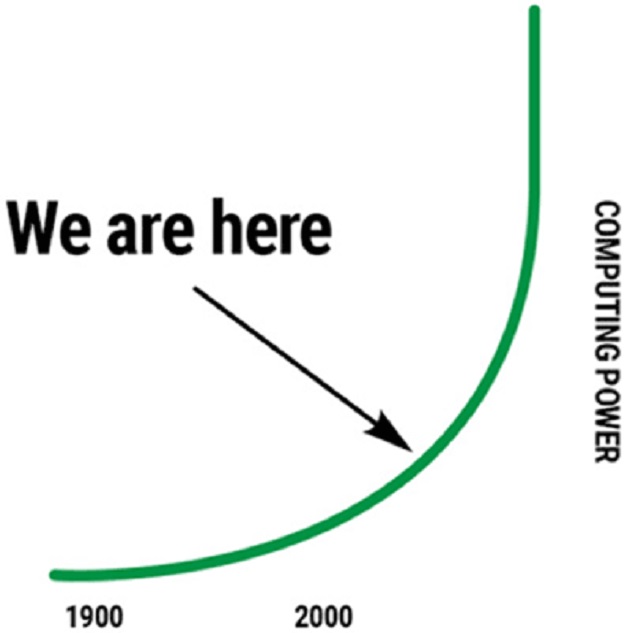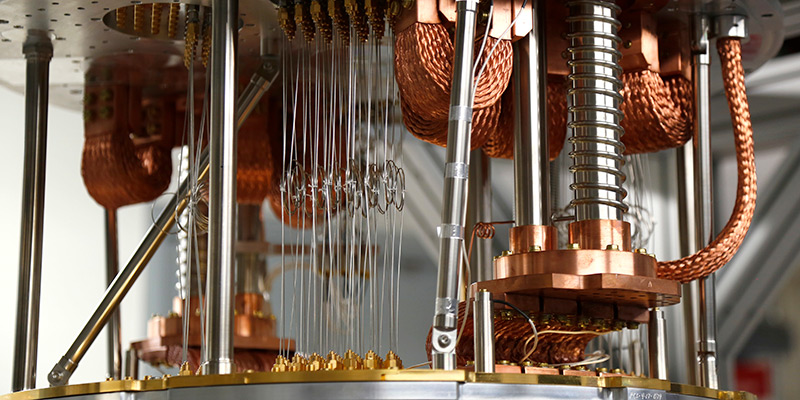Chris’s note: This week, as part of a special holiday series, we’re sharing our most valuable essays of the year. Over the next few days, you’ll hear from Stephen McBride, Chris Wood, and Justin Spittler on their top moneymaking opportunities.
We kick things off today with Chris Wood. If you don’t know, Chris is our microcap tech expert. Today, he’s stepping forward to expose “the biggest lie in all of tech”…
You may have heard about this lie. But you probably don’t know the truth behind it… and more important, how to set yourself up for big profits.
These Three Technologies Will Pick Up Where Moore’s Law Leaves Off
By Chris Wood, editor, Project 5X
There’s a big lie about disruption going around.
Folks aren’t spreading it intentionally...
Many smart investors I talk to genuinely believe it to be the truth.
As a RiskHedge reader, you’re in the top 1% of people who understand disruption and the money-making opportunities it can create.
But if you accept this widespread lie, you’ll likely make the wrong decisions when investing in disruptive companies.
In today’s issue, I’ll explain the real truth and why it matters to you.
- As you likely know, your smartphone is more powerful than an early ‘90s supercomputer.
It’s a phone, camera, camcorder, Walkman, watch, wallet, radio, global map, TV, VCR, and computer all in one.
We have “Moore’s law” to thank for this.
Named after Intel founder Gordon Moore, it observes that computing power doubles roughly every two years.
This has led to exponential growth in computing power.
As you may know, exponential growth “snowballs” over time. It builds momentum and eventually leads to vertical gains, as you can see here:

For the past few decades, computing power has more or less followed this path.
- The driving force behind Moore’s law is this:
It holds that the number of transistors that can fit on a computer chip doubles about every two years.
Transistors allow computers to compute. The more transistors you cram onto a chip, the more computing power it has.
Again, for the past 50 years, this has more or less held true. Back in 1965, only 64 transistors fit on the world’s most complex computer chip.
More than 10 billion transistors can fit on today’s chips.
Moore’s law is responsible for many of the giant stock market gains of the past few decades. Leaps in computing power enabled big disruptors like Apple, Microsoft, and Amazon to achieve huge gains like 50,800%, 159,900%, and 111,560%.
And along the way, the companies that make the computer chips have gotten rich, too.
Taiwan Semiconductor, Micron Technology, and Intel achieved gains of 1,014%, 3,256%, and 35,050%.
Conventional wisdom is that Moore’s law will continue to snowball. As progress gets faster and faster, you can understand why many folks think we’re headed for a tech utopia.
- It’s a great story. But it’s not quite true.
Moore’s law isn’t really a law.
Gravity is a law. Moore’s law is an observation and a forecast.
As I mentioned, since 1965, it has held true.
But here’s the key...
Moore’s law is breaking down as I type.
You see, although today’s transistors are microscopic, they still take up physical space.
There’s a limit to how small you can make anything that occupies physical space.
We are now approaching that limit with transistors. In other words, Moore’s law has reached its breaking point.
Does that mean progress will stop?
Not a chance.
There are 3 new technologies that will pick up where Moore’s law leaves off. Some of you wrote in asking for more details on them… So let’s take a closer look…
- 3D computing just hit the market.
What does a city do when it runs short of land?
It builds skyscrapers.
By building “up,” you can create real estate with the footprint of a one-story building, but one that holds 100X more people.
Something similar is just getting underway in computing.
You see, the “guts” of computers have always been two-dimensional. Flat computer chips sit on a flat motherboard. Nothing moves in 3D. There’s no “up” or “down” inside a computer chip.
That’s now changing. In June, Intel (INTC) announced its first-ever processor that will be made using 3D chip technology.
Tech reporters are touting it as “how Intel will beat Moore’s law.”
Chips stacked in 3D are far superior to ones placed side by side. Not only can you fit multiples of transistors in the same footprint; you can better integrate all the chip’s functions.
This shortens the distance information needs to travel. And it creates many more pathways for information to flow.
The result will be much more speed and power packed into a small space. Eventually, 3D chips could be 1,000 times faster than existing ones.
- DNA computing is a bit further off... but its potential is mind-boggling.
DNA, as you know, carries the instructions that enable life.
As incredible as it sounds, DNA can be used for computing. In 1994, a computer scientist at the University of Southern California used DNA to solve a well-known mathematical problem.
One pound of DNA has the capacity to store more information than all the computers ever built.
A thumbnail-size DNA computer could theoretically be more powerful than today’s supercomputers.
I won’t get deep into the science here. DNA computing is still very early-stage. But several companies, including Microsoft (MSFT), are working to push the technology forward.
And we know the technology works. Earlier this year, a DNA computer was able to successfully calculate the square root of numbers up to 900.
Again, this is just the first step… But I can see DNA computers eventually replacing traditional computers.
- Quantum computing could be the ultimate disruption.
The science behind quantum computing will bend your mind.
To understand its potential, all you really need to know is this:
The basic unit of conventional computation is the bit.
The more bits a computer has, the more calculations it can perform at once, and the more powerful it is.
With quantum computing, the basic unit of computation is called a quantum bit—or qubit.
Bits behave linearly. With a 20-bit computer, you might add 2+2+2+2+2+2+2+2+2+2.
Qubits are different. Every qubit doubles computing power.
So, a ten-qubit computer could do 2x2x2x2x2x2x2x2x2x2 calculations at once, or 1,024.
A 100-qubit quantum computer could perform over 1,000 billion billion billion simultaneous calculations.
Those numbers are too big for humans to comprehend.
In theory, a small quantum computer could exceed the power of a regular computer the size of the Milky Way galaxy.
With enough computing firepower, a quantum computer could solve any problem.
If we ever achieve far-out goals like controlling the weather, colonizing Mars, or reversing human aging, quantum computing will likely be the driving force.
- So... where do we go from here?
Although these three technologies are exciting, they’re all years off. We need a solution now. Moore’s law is on life support.
That’s why I was so intrigued when I found out what one little microcap company has achieved.
In short... it’s created an entirely new way to make microchips. It fused silicon with another element... resulting in “superchips” that are up to 100% more powerful than today’s “bleeding edge” chips.
Best of all—its tech is not only patented... it’s proven to work! The world doesn’t know about this yet because this company is essentially a startup. It does just $500K in annual sales. Its tiny stock, which trades on the Nasdaq, is unknown to the vast majority of folks.
But as my research here shows, this company is about to have its “coming out moment”…
Regards,
Chris Wood
Editor, Project 5X




